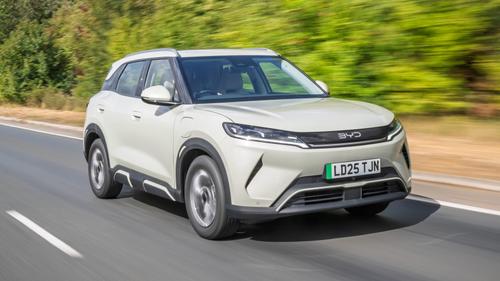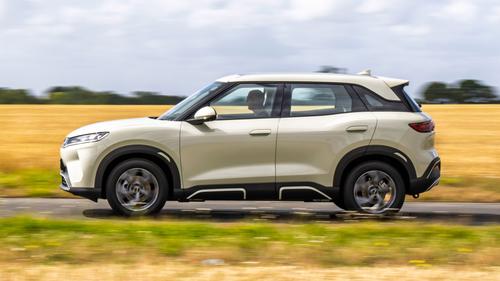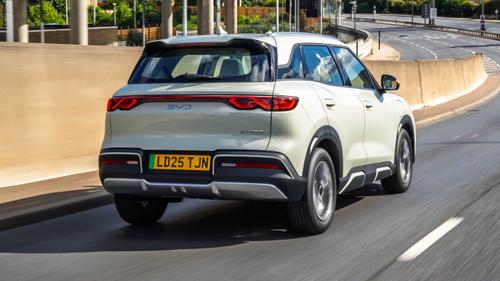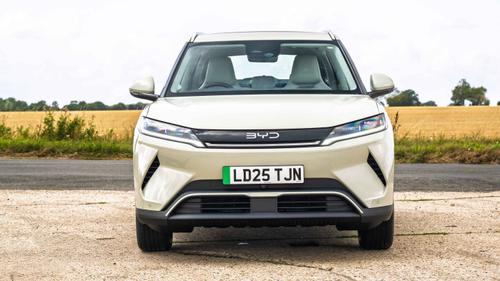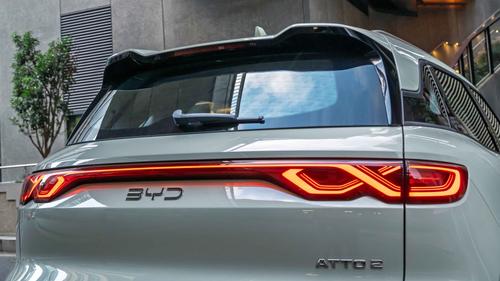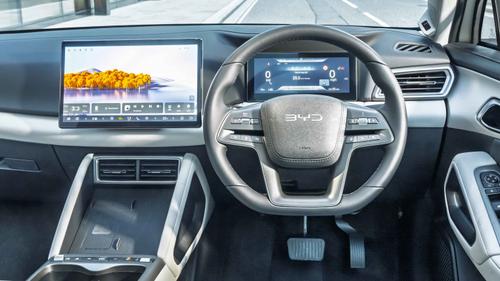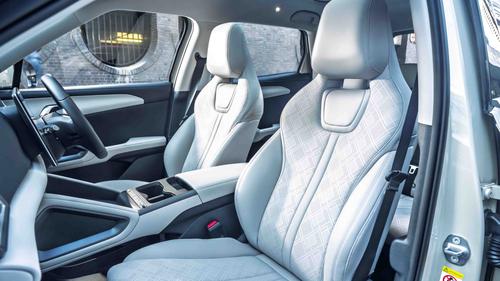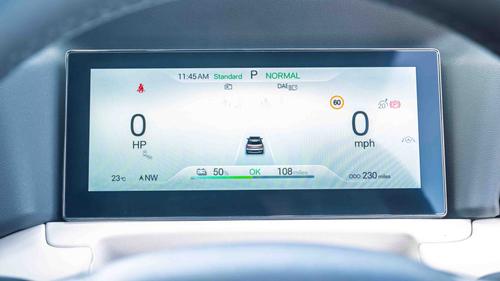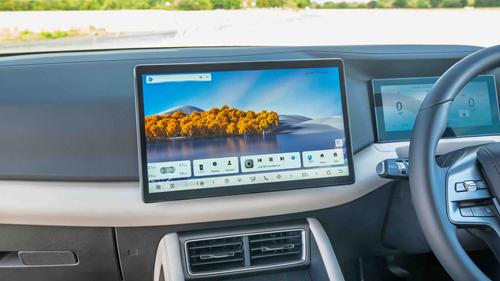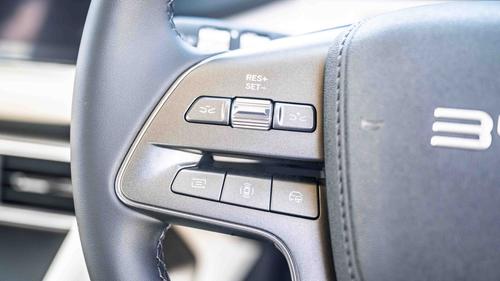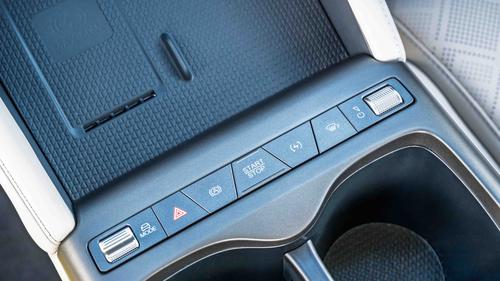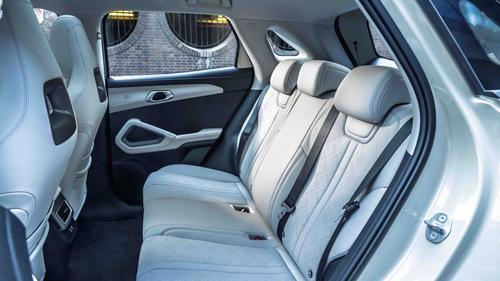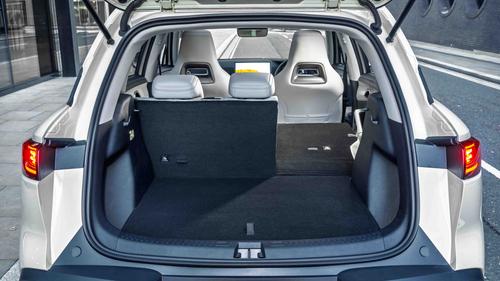
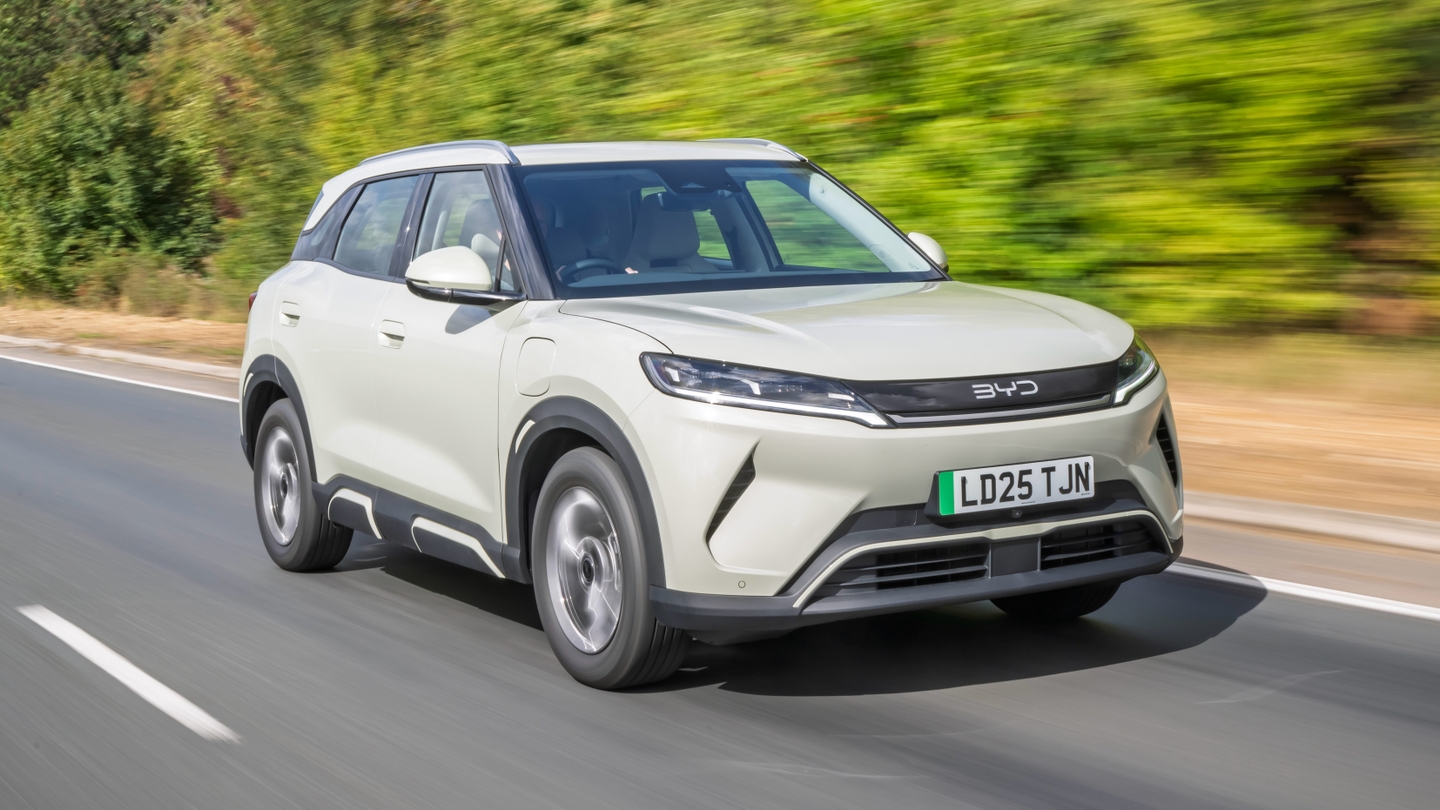
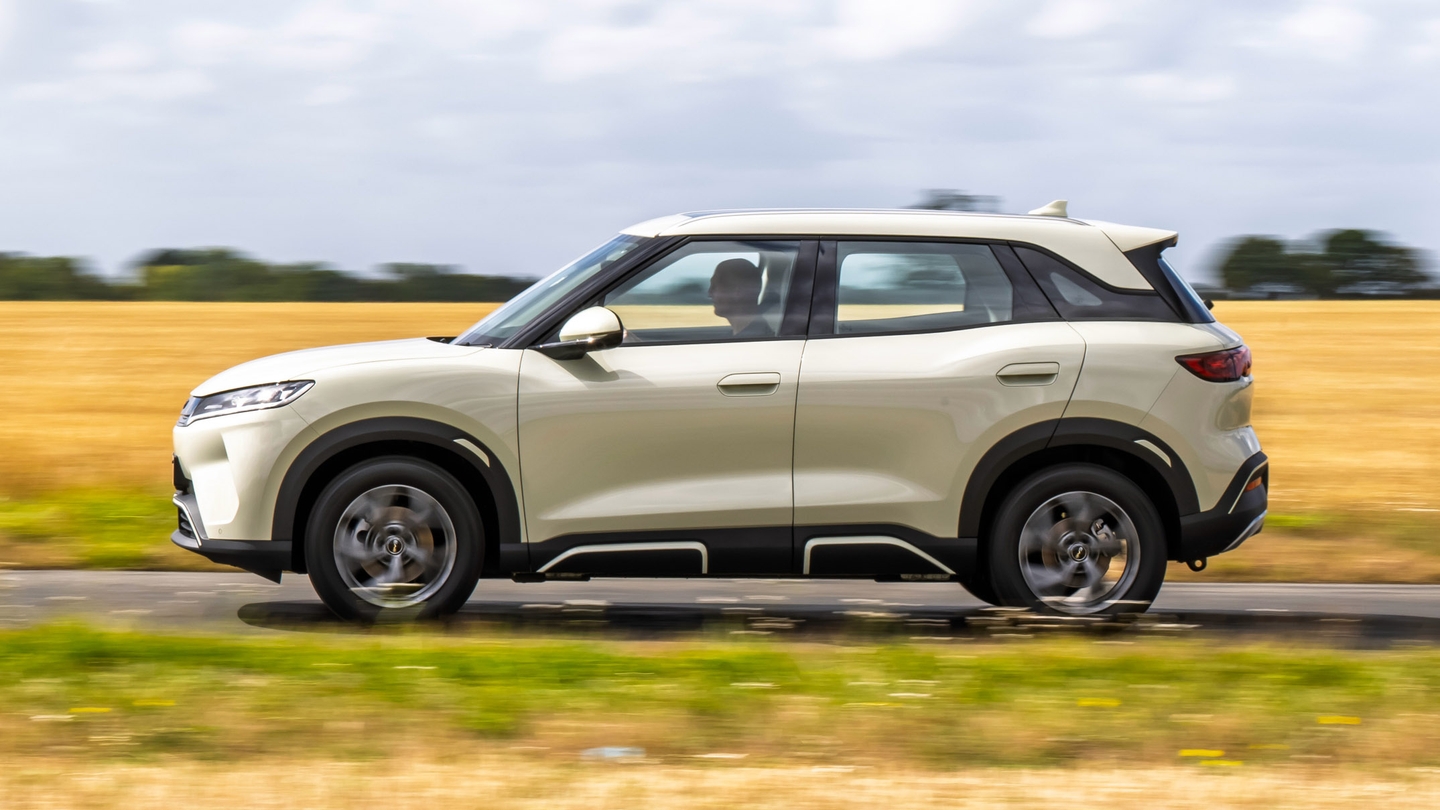
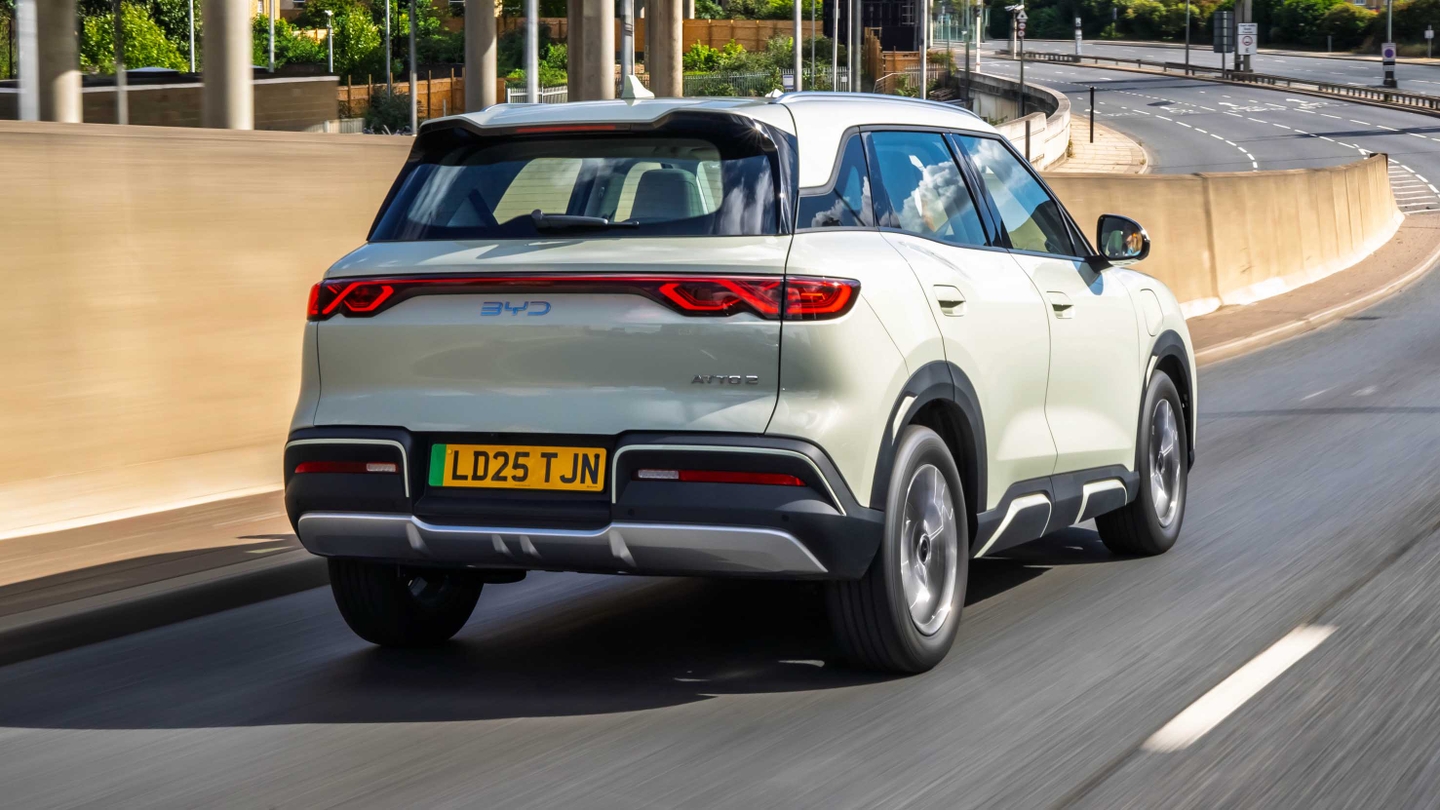
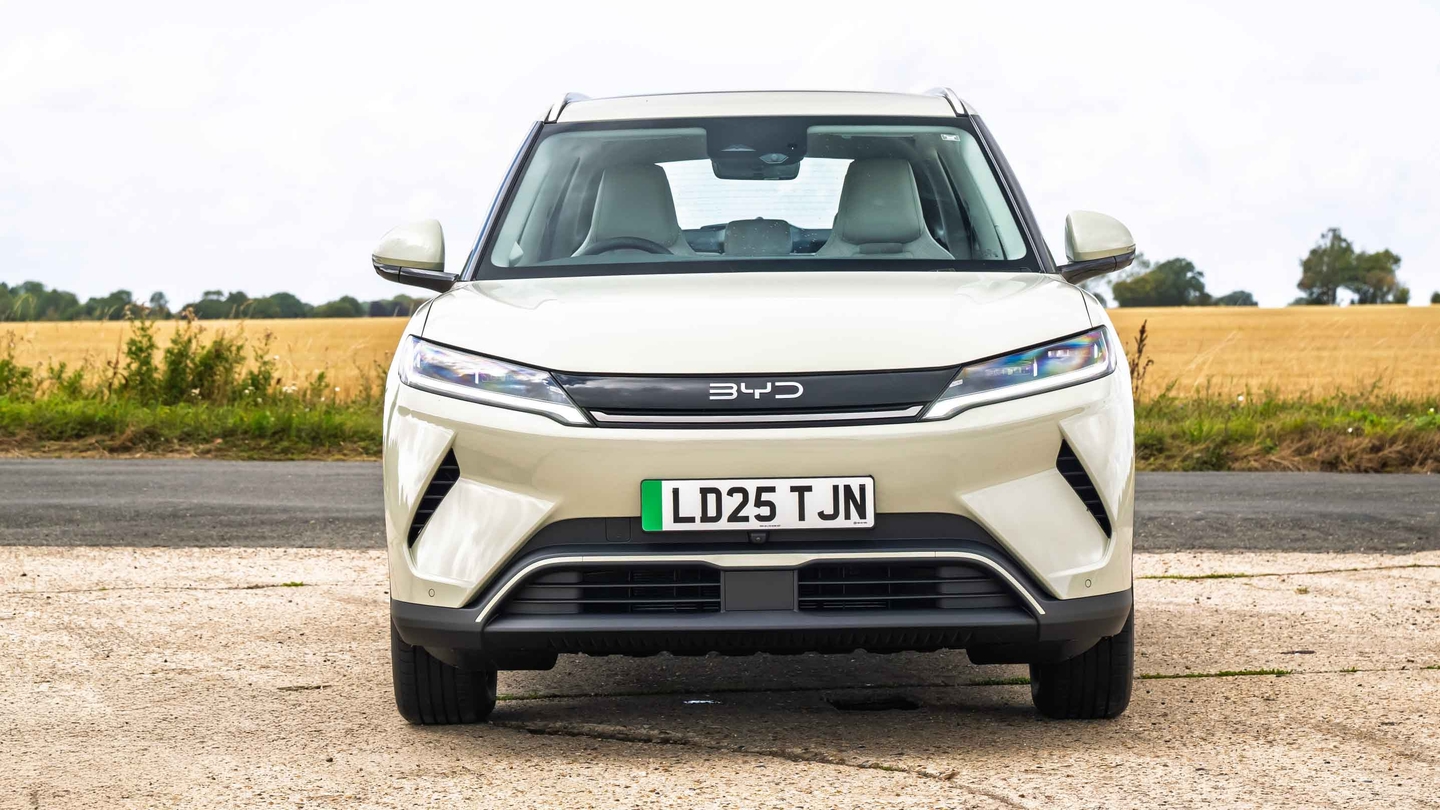
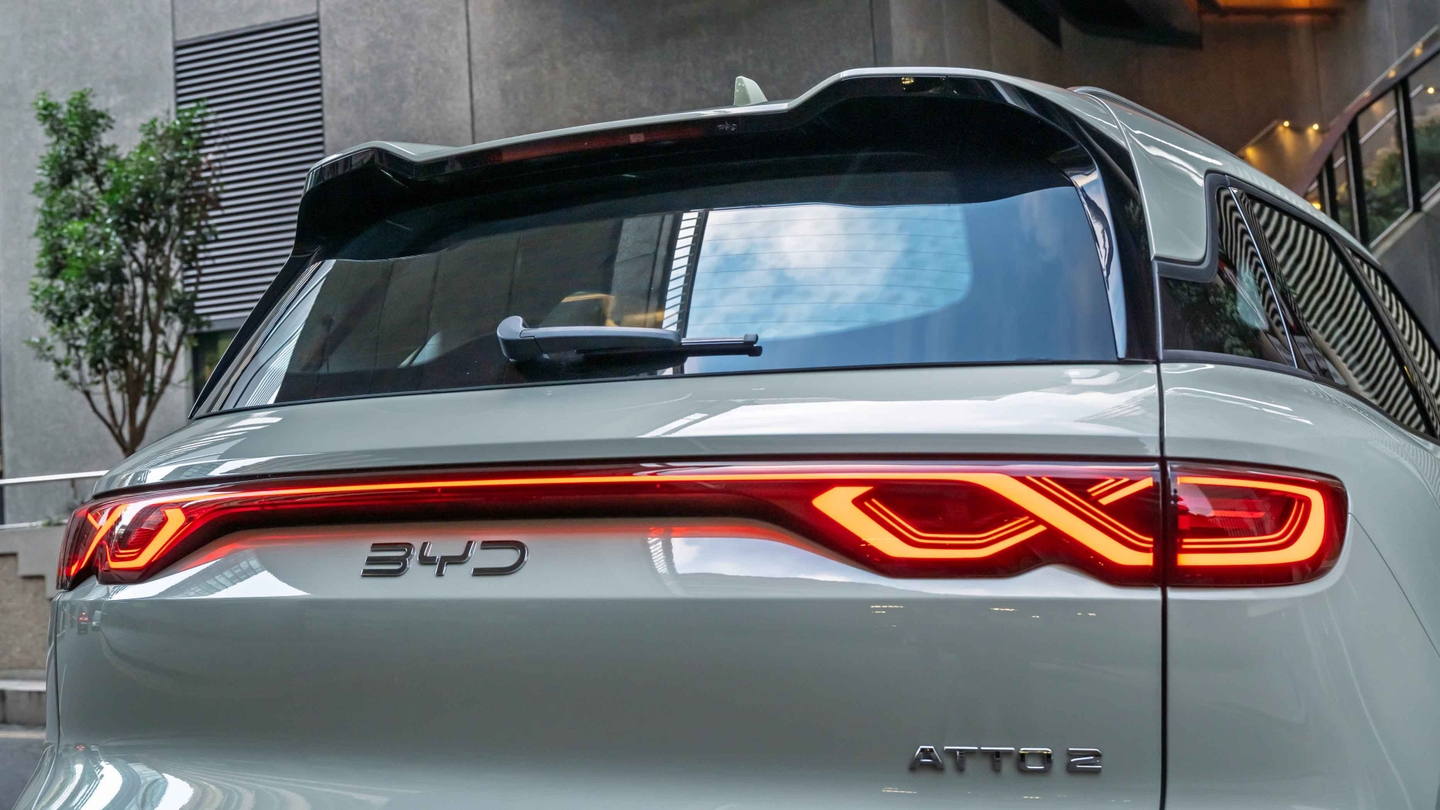
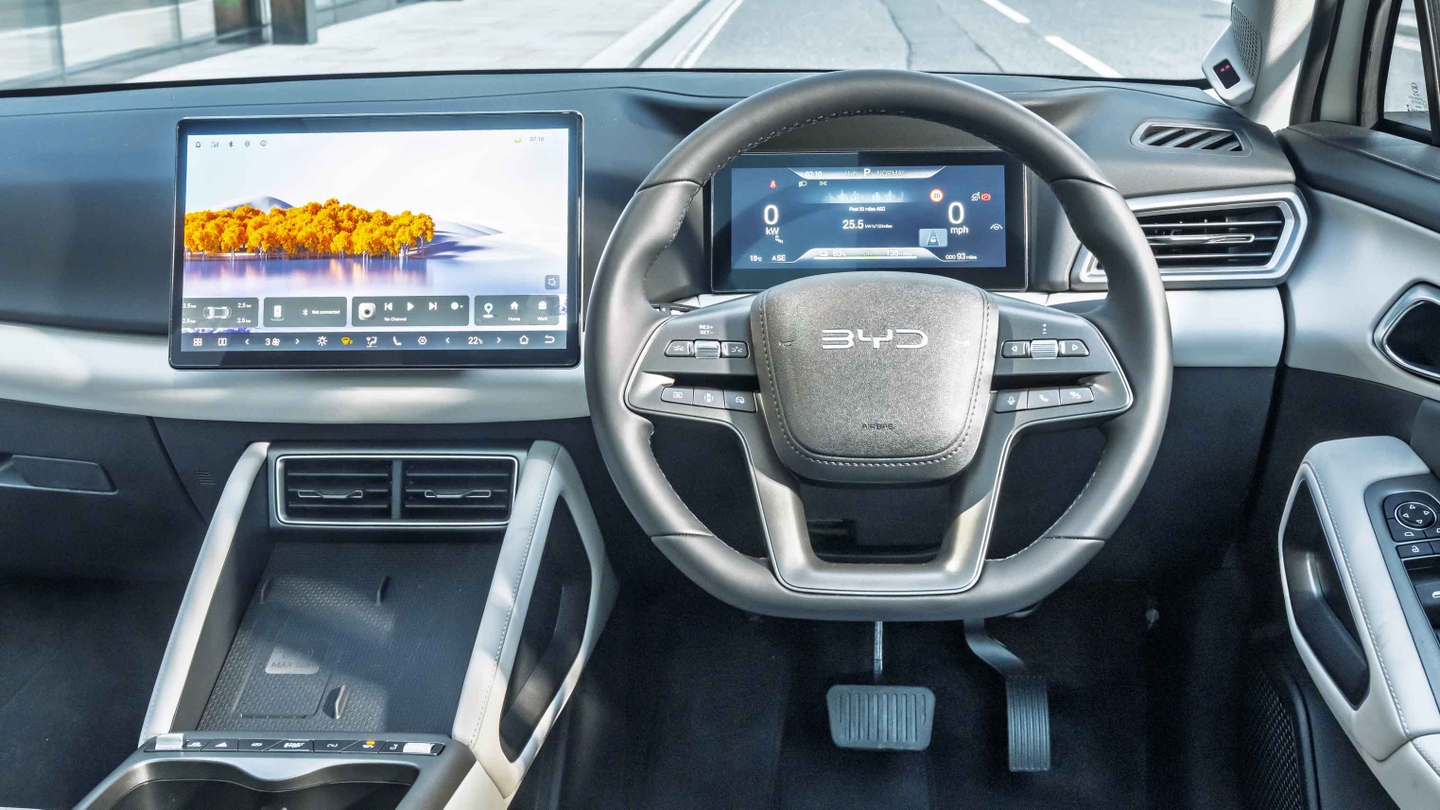
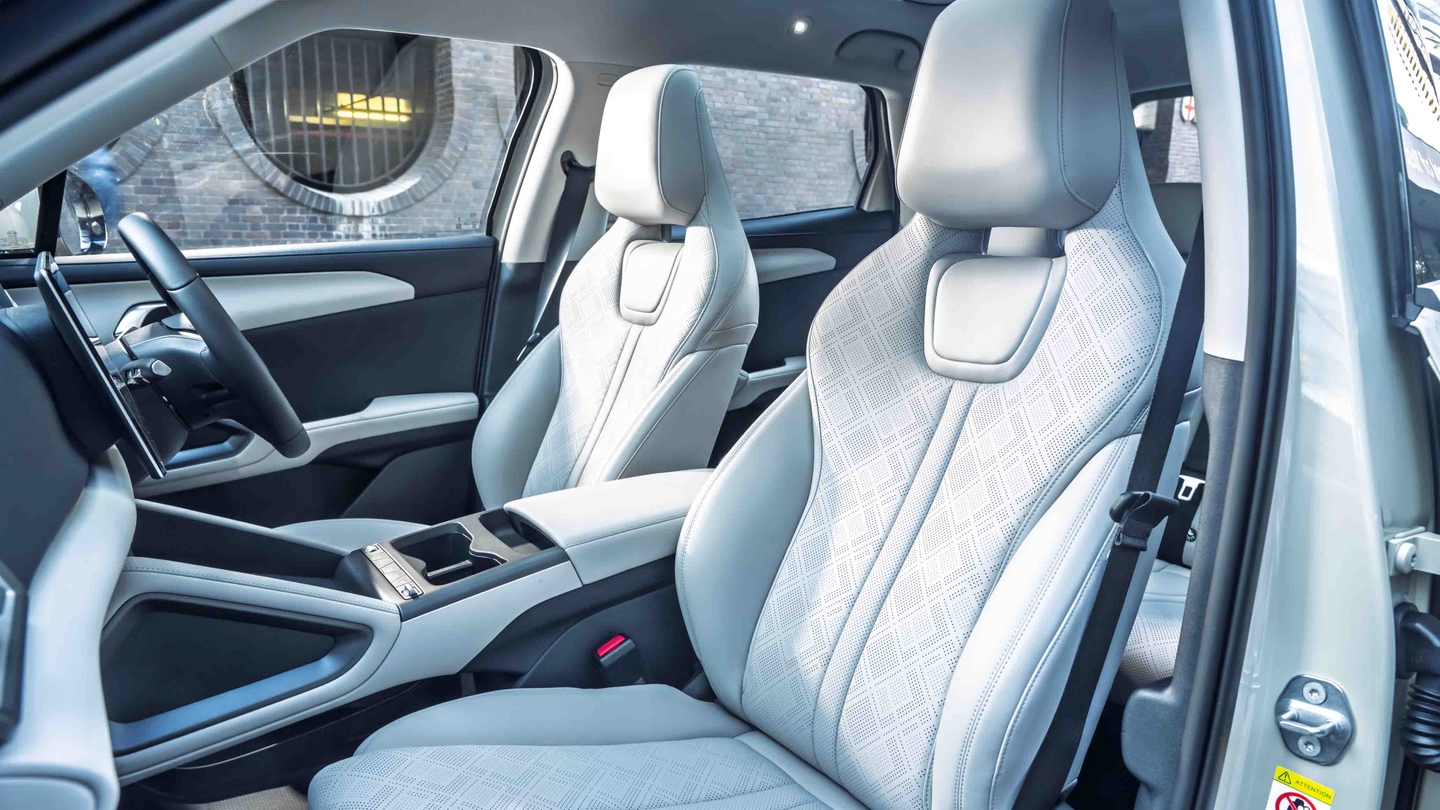
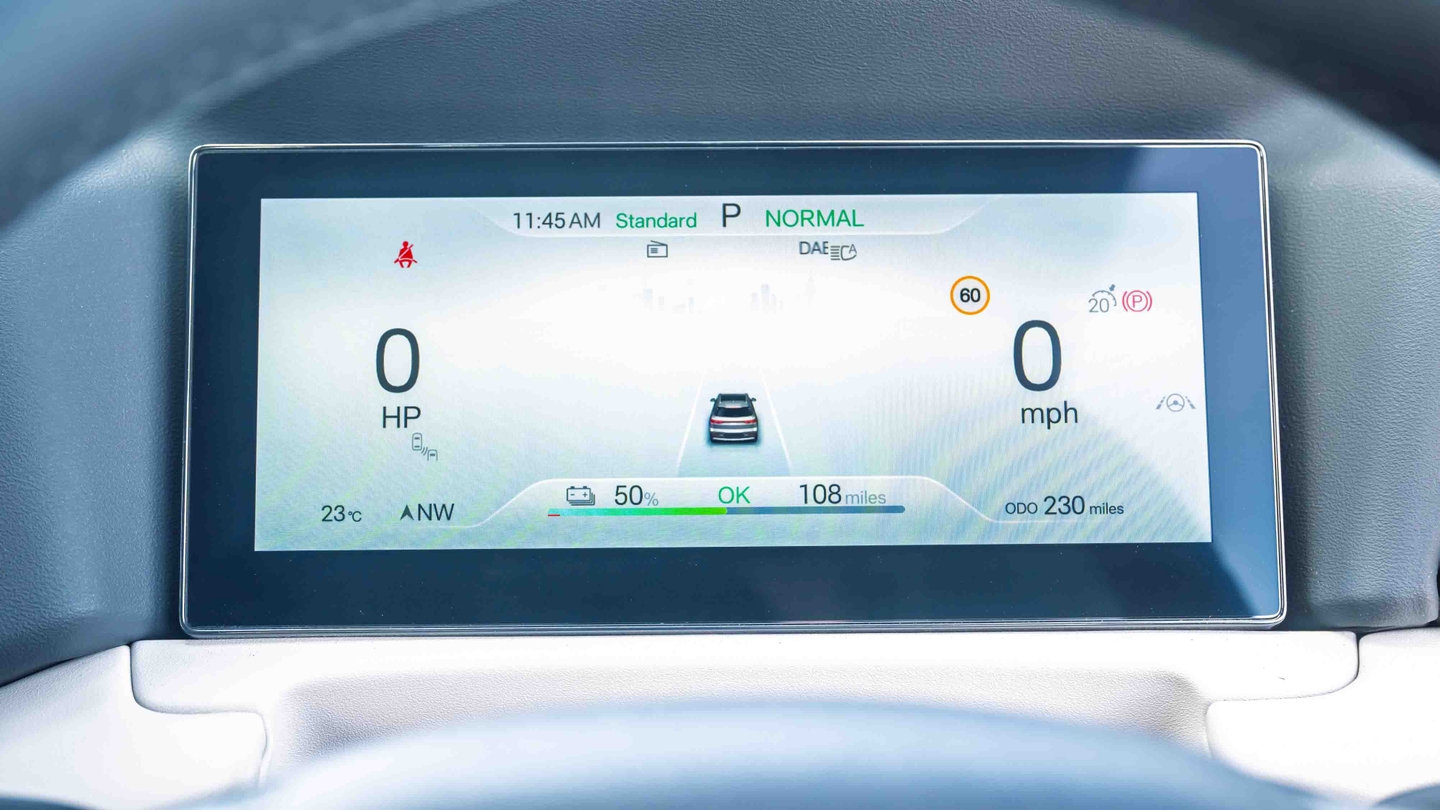
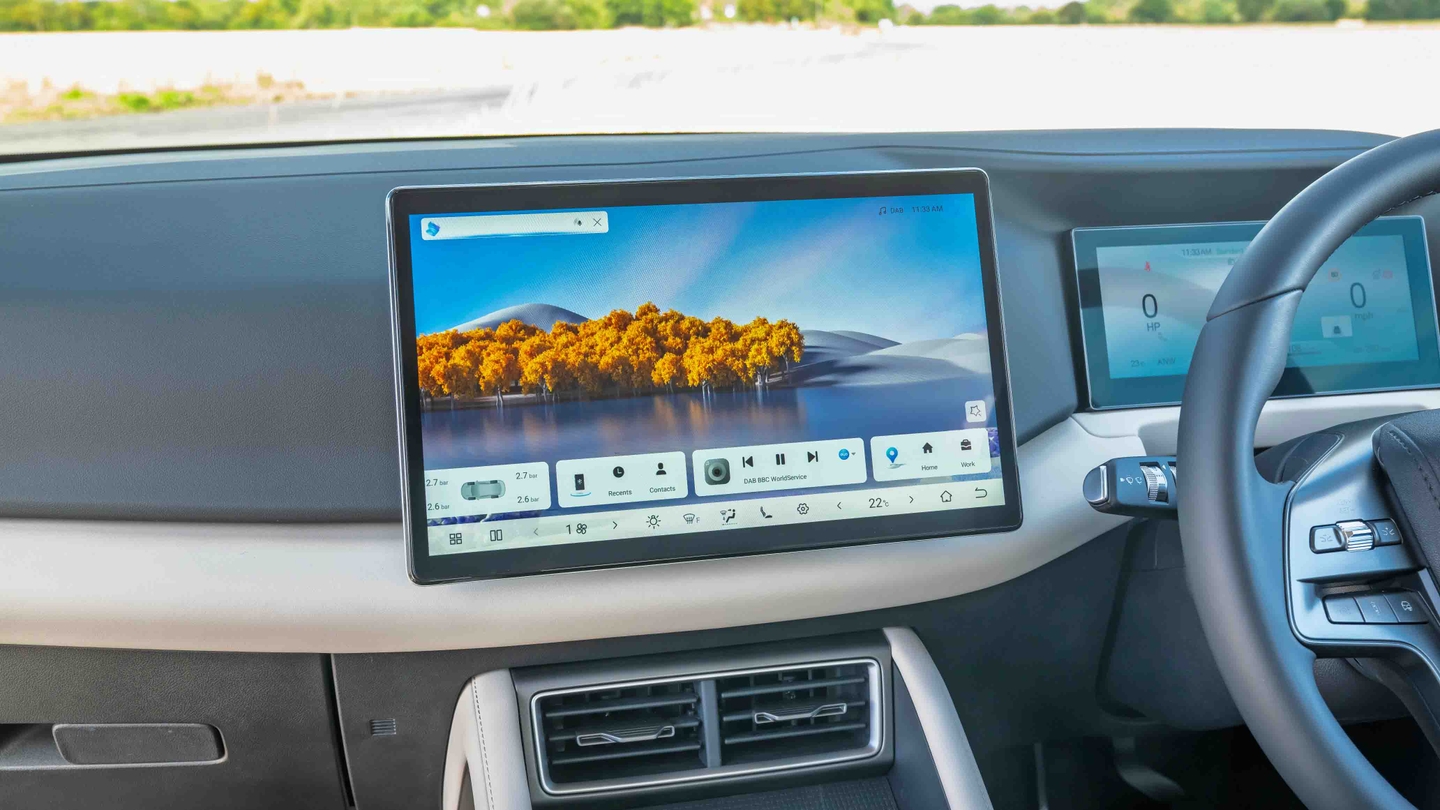
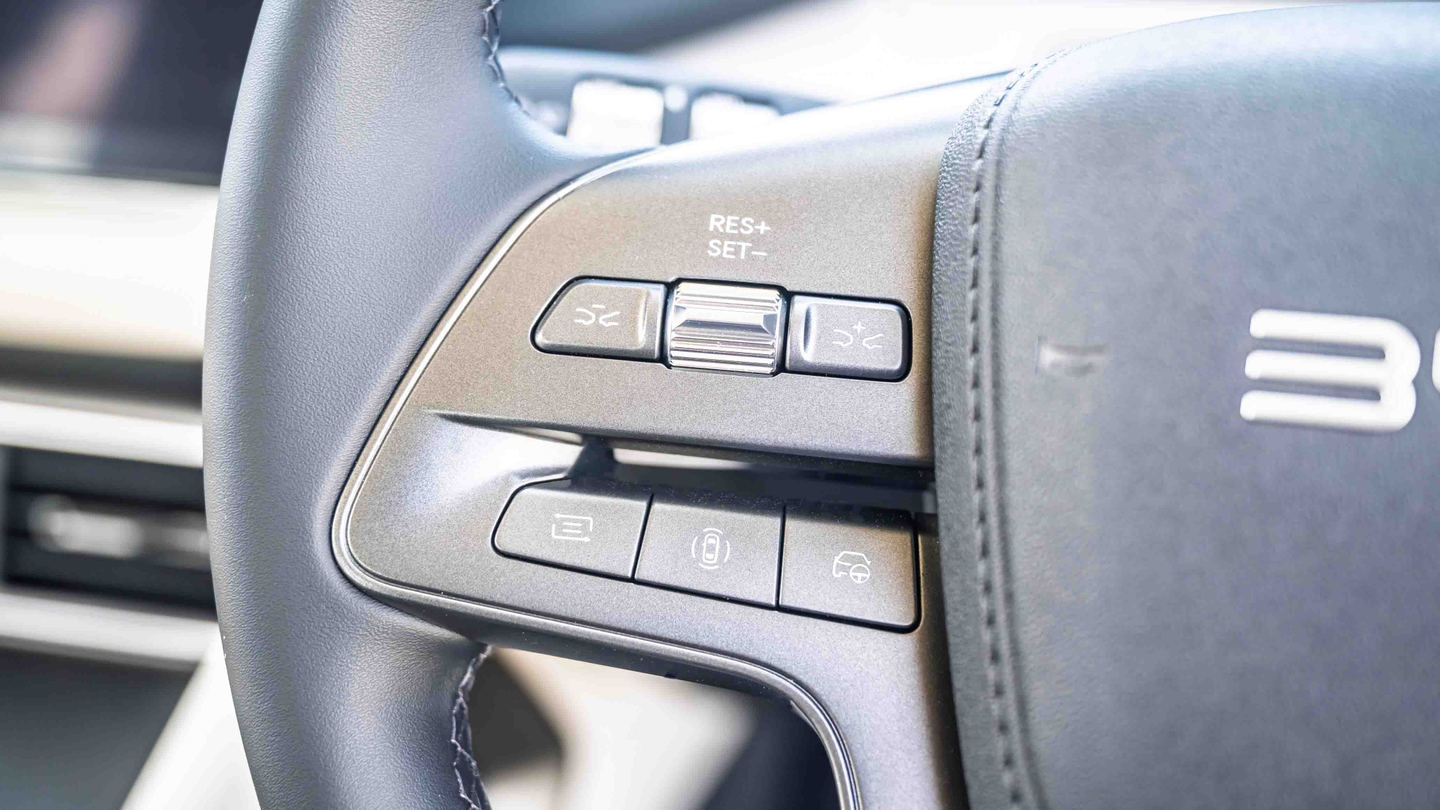
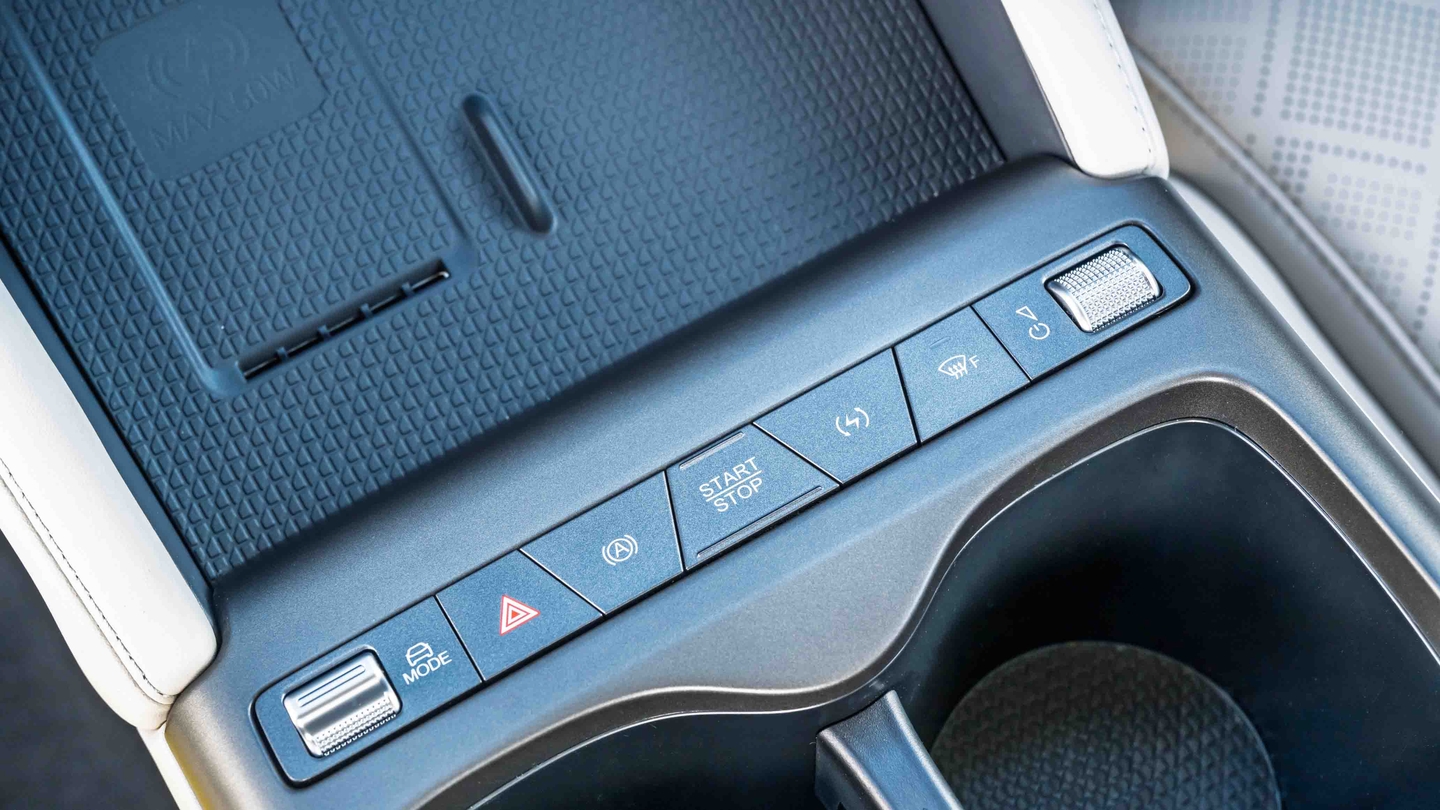
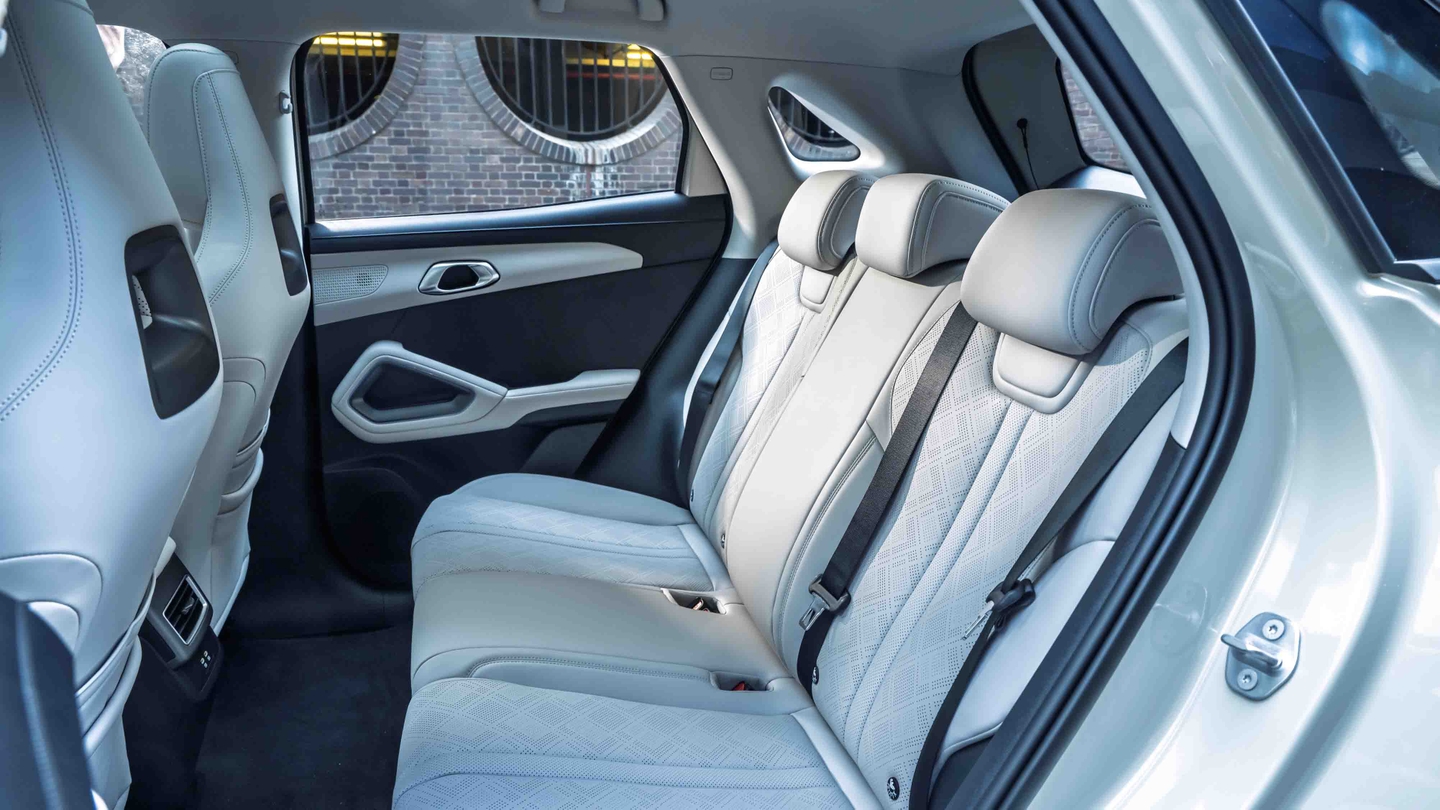
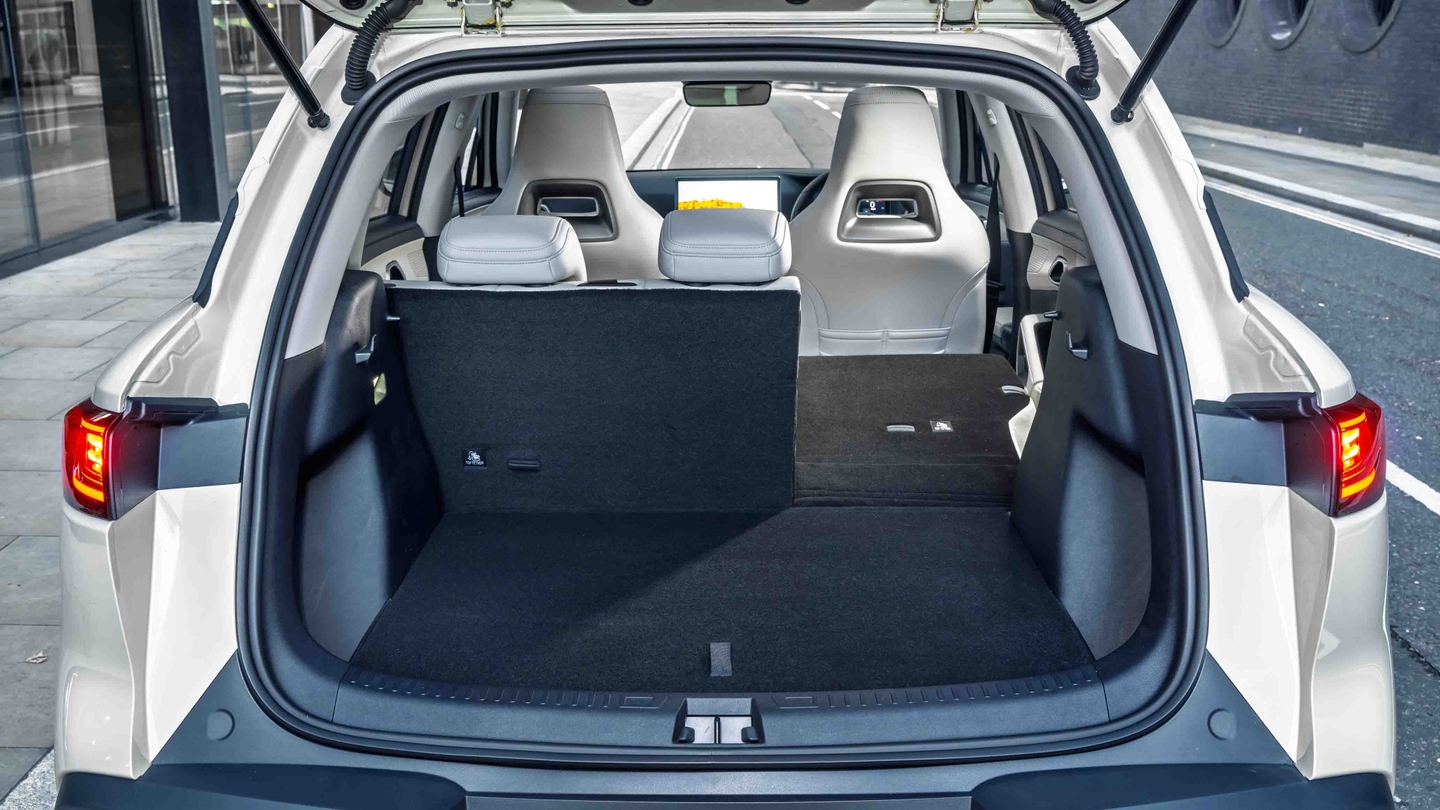
BYD Atto 2 Review
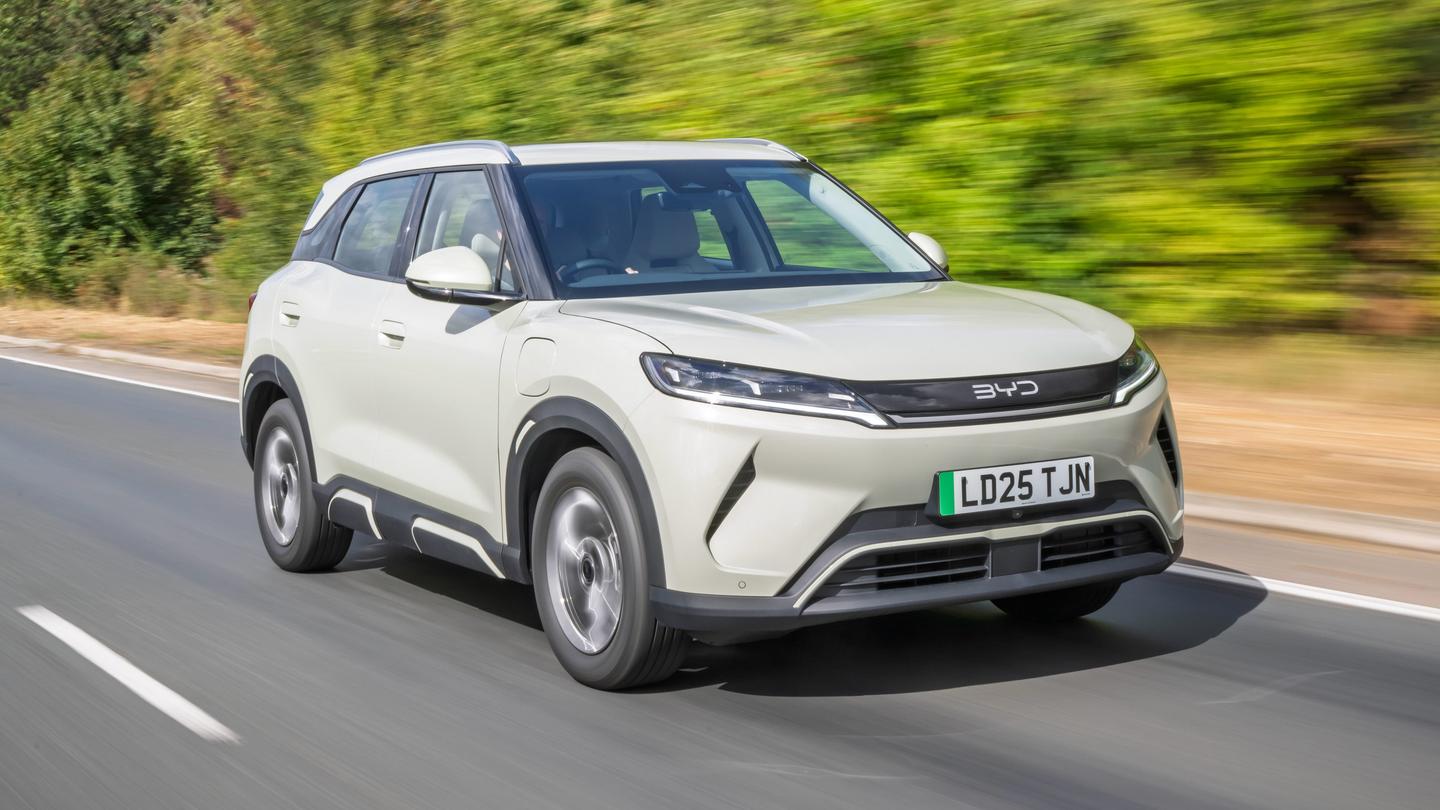
BYD is busy launching lots of new models with very similar names.
This one’s sort of self-explanatory: an SUV that’s smaller and cheaper than the Atto 3. It’s fully electric but it’s not short of talented rivals, and the Atto 2 lacks a bit of sparkle.
- Lots of standard equipment
- Great passenger space
- Decent range and charging figures
- Only the top model has the impressive charging rate
- Touchscreen could be more configurable
- Lacking any ‘X factor’
Should I buy a BYD Atto 2?
If the BYD Atto 2 is the only car you try, you’ll probably end up buying it. There’s not an awful lot wrong with it, and it’s a good all-rounder.
But it’s a new entrant into a crowded market full of talented rivals, and it doesn’t stand out in any way. It’s not the cheapest, the most comfortable, the most stylish or the rangiest. It’s just one of a number of options to consider.
"It’s well worth upgrading to the higher-spec car if you’re going to be doing a lot of motorway driving"
BYD says the front-end styling is inspired by a ‘dragon face’. We’d say smart but quite generic. From other angles, there are little bits to talk about, such as the cool body-coloured accents within the plastic cladding, a ‘floating’ roof and the Mobius ring tail-lights – which are said to bring ‘endless luck for the driver and all passengers’.
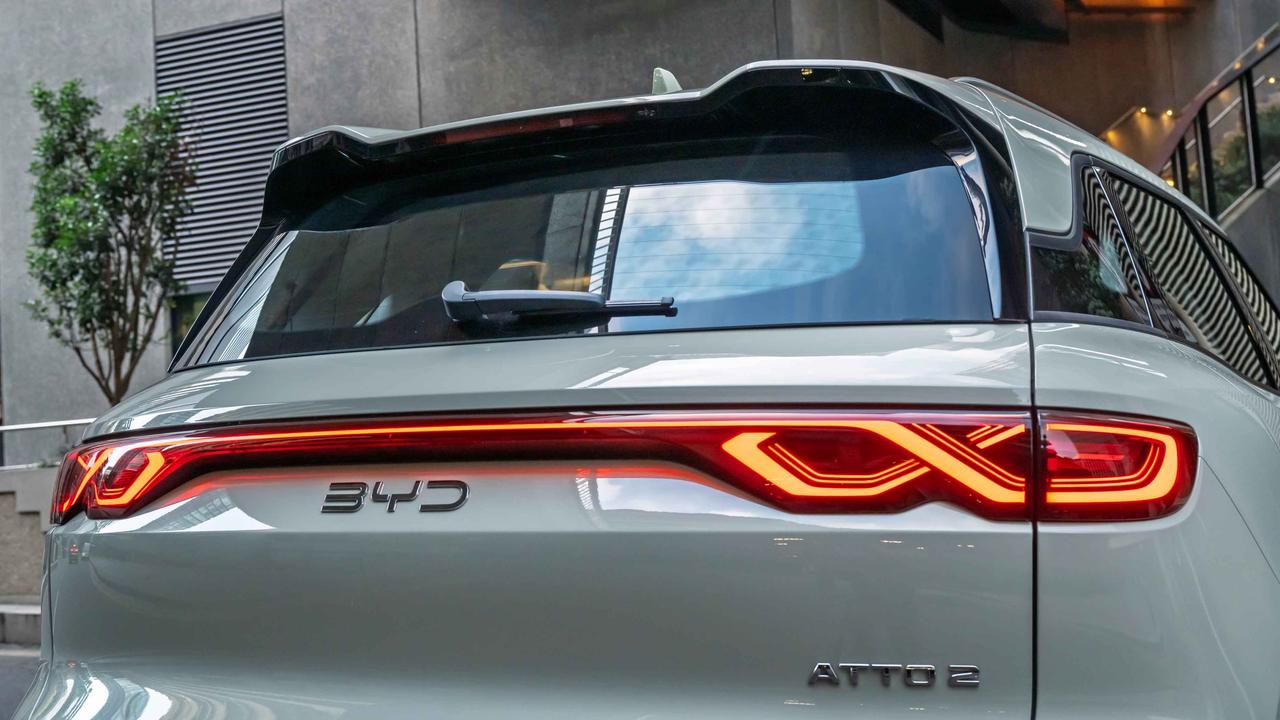
Even the colour palette is bland. Just four colours are available, three of which are monochrome and the outlier is the pale green in our pictures – and that’s almost beige.
There are two trim levels with minor equipment differences, but the main difference is that the more expensive trim has a bigger battery, more power and faster charging. However, both manage comfortably more than 200 miles to a charge, and the entry-level Boost model still comes with a lot of equipment.
The Atto 2 is priced competitively, but is that enough when it’s up against talented rivals such as the Kia EV3 and Skoda Elroq? Then we get to the Ford Puma Gen-E which, thanks to a £3,750 government grant, is roughly £4,000 cheaper than an entry-level Atto 2.
Interior and technology
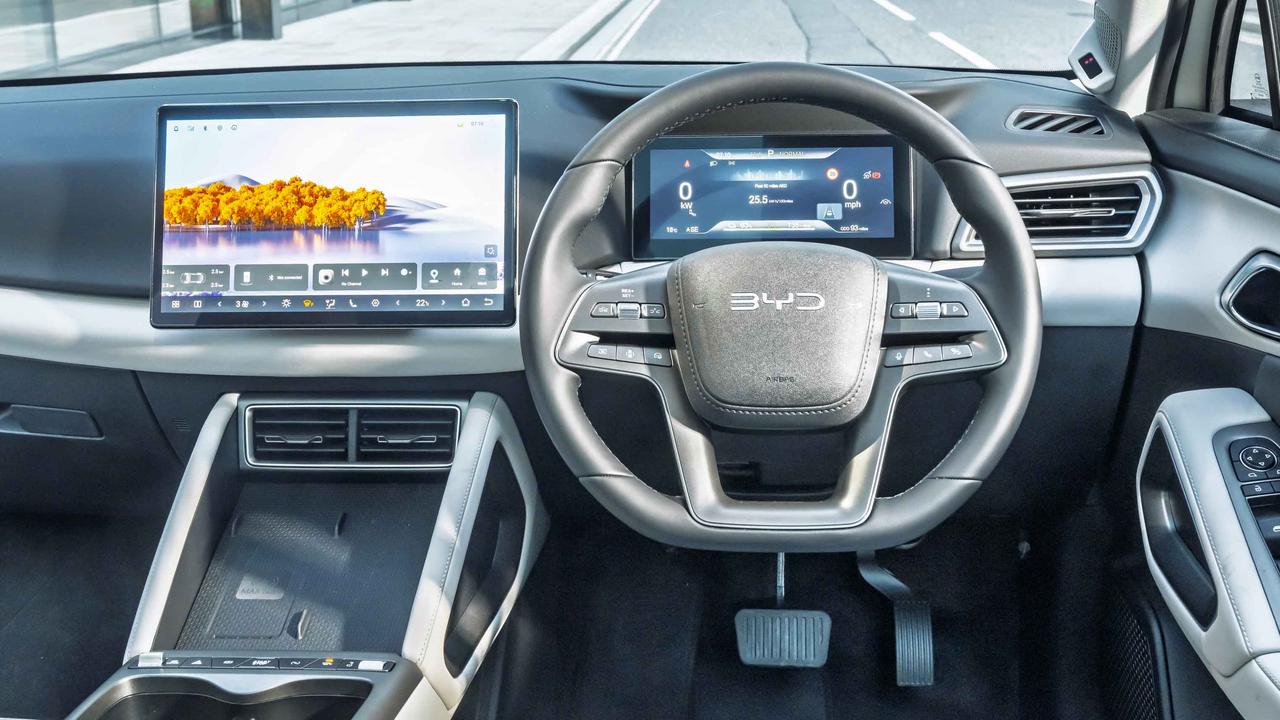
Where’s the bold, quirky interior of the Atto 3? The personality? The Atto 2’s interior could be out of any car, with a simple layout focused around a 12.8-inch touchscreen.
The interior is nice enough – the vegan leather upholstery comes in a choice of black or beige (both are no-cost options), and the build quality seems decent – but it is bland. Even some more ambient lighting would lift the atmosphere considerably.
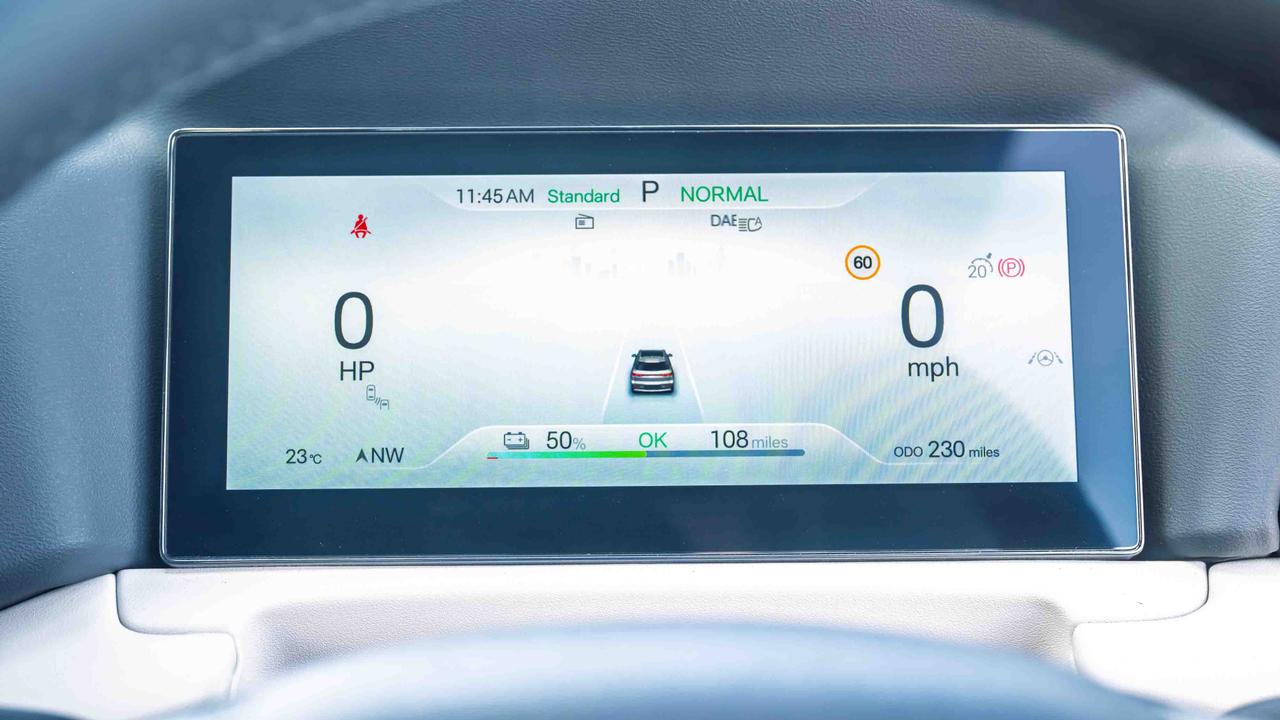
Digital dials come as standard, and they’re covered by a cowl which should make them easy to read in bright sunlight. However, we’d like the screen to offer more choice of layout and info displayed. You can’t get rid of the gauge that shows you the percentage of the power you’re using, which feels irrelevant in almost all circumstances.
As for the central screen, it’s the main control for the majority of on-board functions, so you’ll use it a lot. The main screen has a clear layout with easily distinguishable sections, although the home screen is little more than a wallpaper with a few buttons at the bottom of the page. Speaking of which, the buttons that are always there are small and easy to mis-hit.
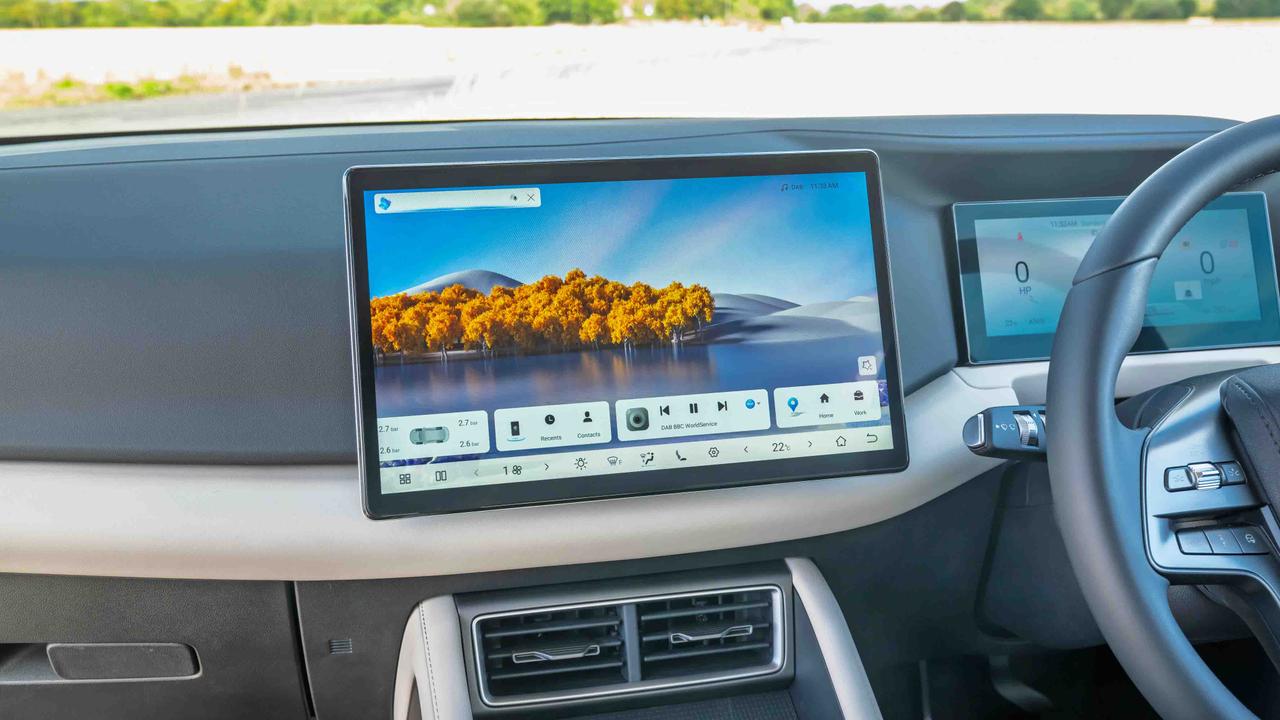
There are some useful features, like the ability to swipe down from the top of the screen to access important settings. But the split-screen function – a must if you want to look at more than one bit of info at once – didn’t work with any of the on-screen apps. Like the Atto 3, the touchscreen rotates, but this feels like a gimmick you’ll play with a couple of times and then leave alone.
As we’ve come to expect from Chinese cars, the cheapest Atto 2 is fully loaded with kit. Like the best plates of nachos. There are electrically adjustable and heated front seats, a heated steering wheel, a 360-degree parking camera, LED headlights with auto high-beam assist, 50W wireless phone charging, Apple CarPlay and Android Auto, keyless entry and more driver assistance tech than you can shake a stick at.
Upgrade from Boost to Comfort and you also get power-fold door mirrors, tinted rear windows and extra seat support for the driver. But the main reason to do so is to get the bigger battery and more powerful motor.
Practicality
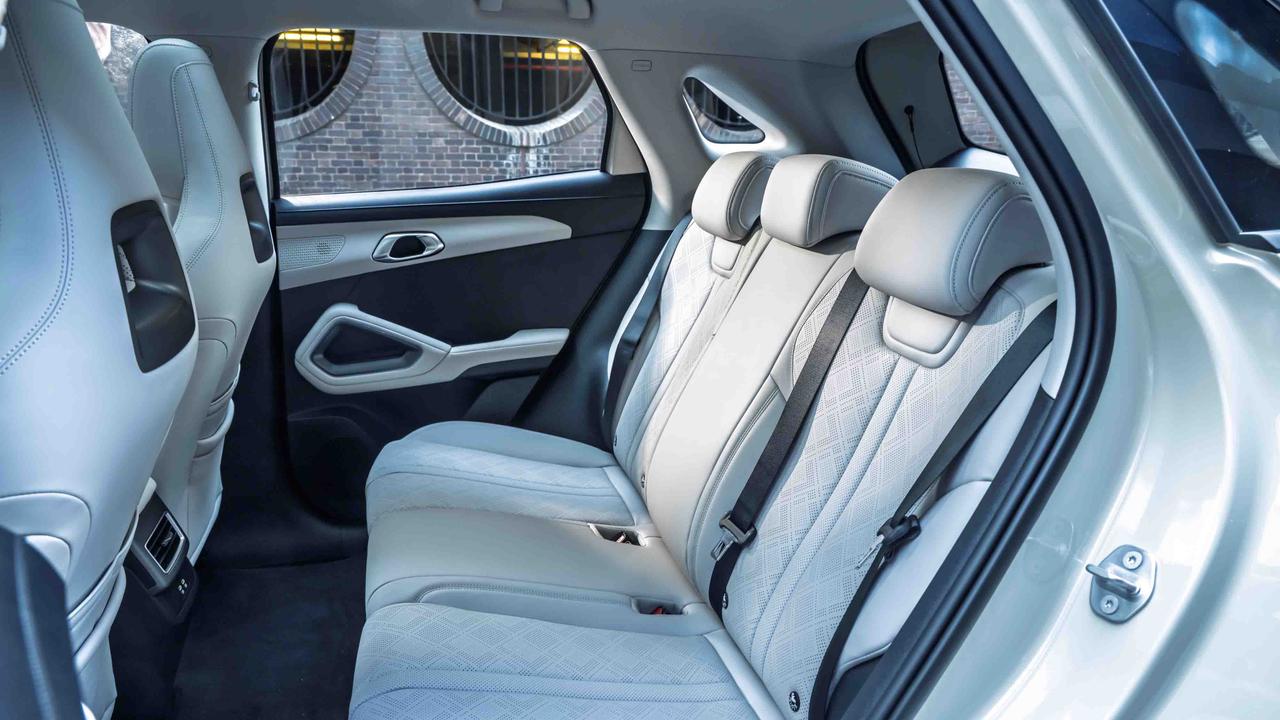
This is one of the Atto 2’s stronger points. Legroom is generous in all seats, and the Atto 2’s upright design means there’s plenty of headroom for most body shapes too. The standard-fit panoramic sunroof floods the cabin with light, and kids will love looking up at the sky. We’d like the Isofix points to be more easily accessible, mind.
There’s clearly been a lot of consideration for interior storage. Two phone trays take up the centre console, plus there’s a useful shelf underneath and the glovebox is big. You’ll need to leave your Stanley cup at home, though, because the door bins are on the small side.
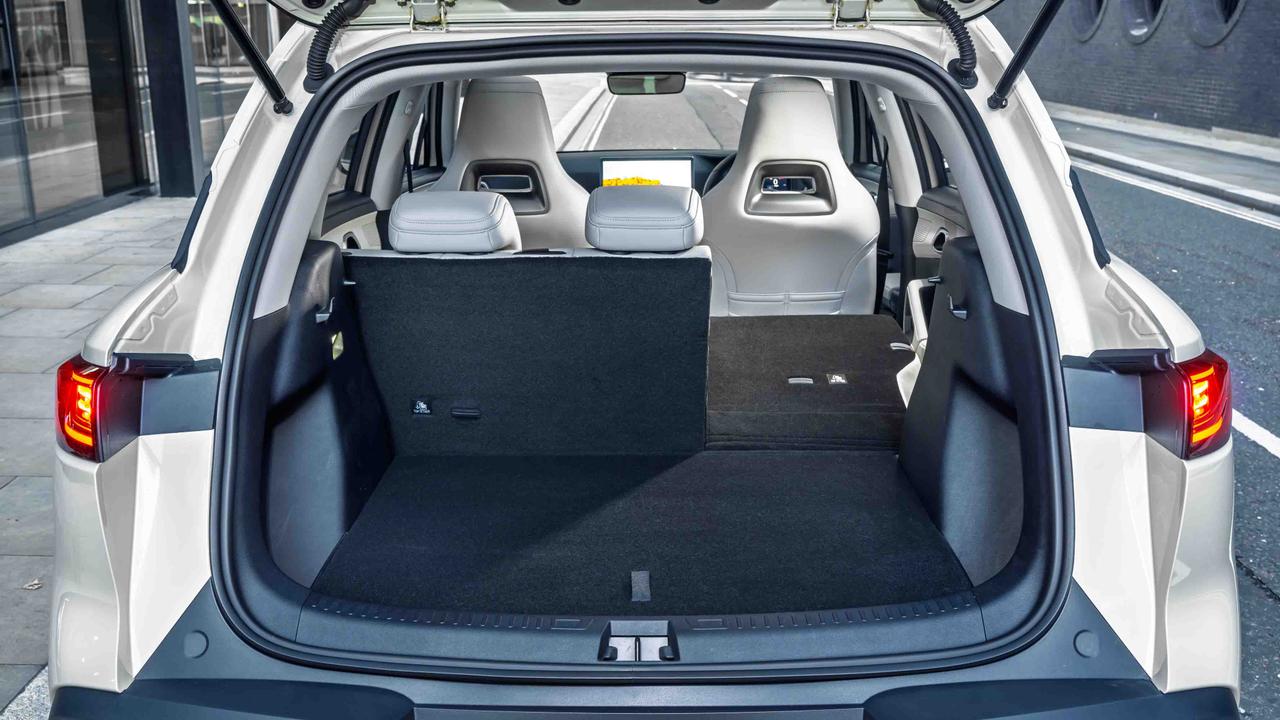
For some reason, the Boost trim offers a 400-litre boot, while the higher-spec Comfort model offers 450 litres. Even the smaller figure is okay – it’s in line with many petrol small SUVs, and it’s larger than the Volkswagen ID.3 – while the 450-litre boot in top-spec models is getting close to the class best. A false floor means you can get rid of the load lip until you need the extra space, or you can hide valuables underneath.
Range and performance
Cheaper Atto 2 models come with a 51.1kWh battery, for a quoted electric range of 214 miles. This is joined by a 177hp e-motor, for a sub-eight-second 0-62mph time.
The Comfort model matches that 7.9-second acceleration time, despite power being boosted to 203hp – because it has a larger and heavier 64.8kWh battery, for a boost in range to 267 miles. That’s decent enough – it’s on a par with the VW ID.3, Renault Megane E-Tech and Peugeot e-2008 – although it’s overshadowed by the £36,000 Kia EV3 and its 375-mile max range.
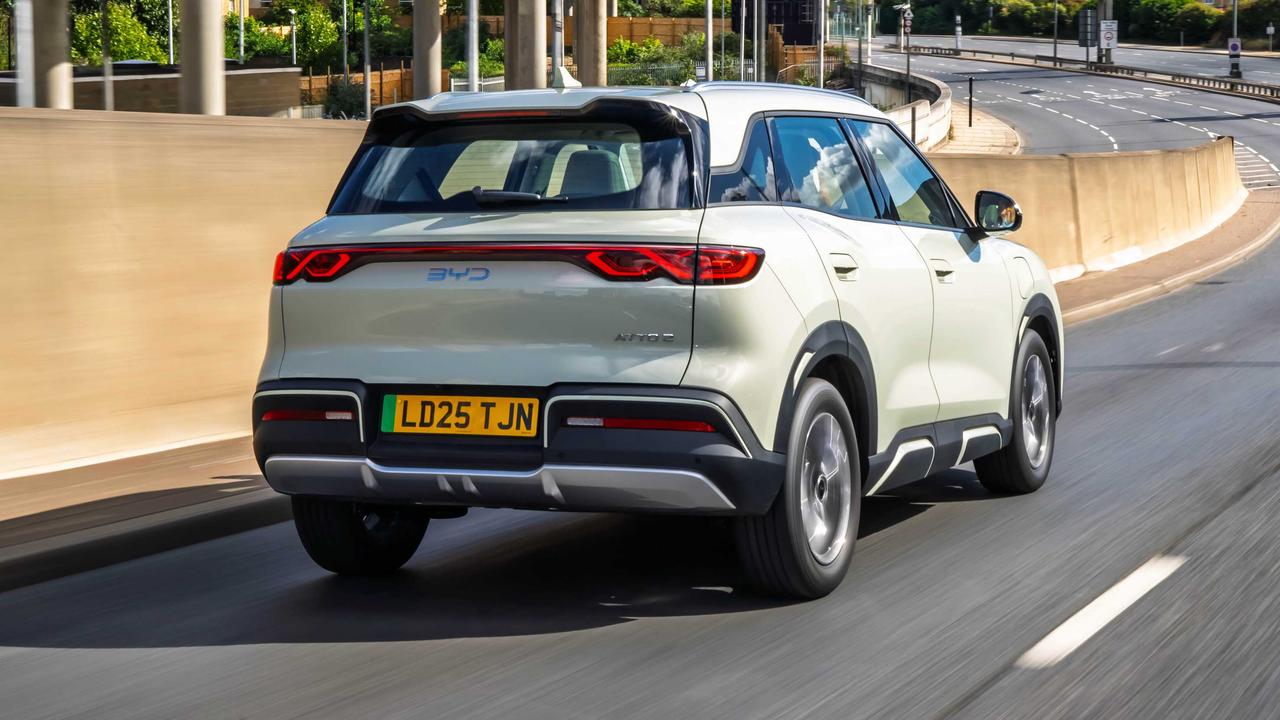
It’s well worth upgrading to the higher-spec car if you’re going to be doing a lot of motorway driving. The fast-charging ability is capped at 82kW on the Boost version, which means a lengthy 10-80% charge time of around 45 minutes. Despite having a larger battery, the Comfort model’s 155kW maximum means it’ll recharge to 80% in less time – for more miles!
The Atto 2 feels fast for brief periods, but it won’t give you the instant shove that’ll push you back in your seat. That’s not a bad thing. Acceleration is easy and consistent, and it never feels like it’s short of power.
Driving and comfort
As a mode of transport, the Atto 2’s driving experience is generally well judged. It won’t entertain you, but there aren’t any glaring faults with it either. The steering is neither light nor heavy, and the brakes balance stopping power from the discs and the regenerative braking well.
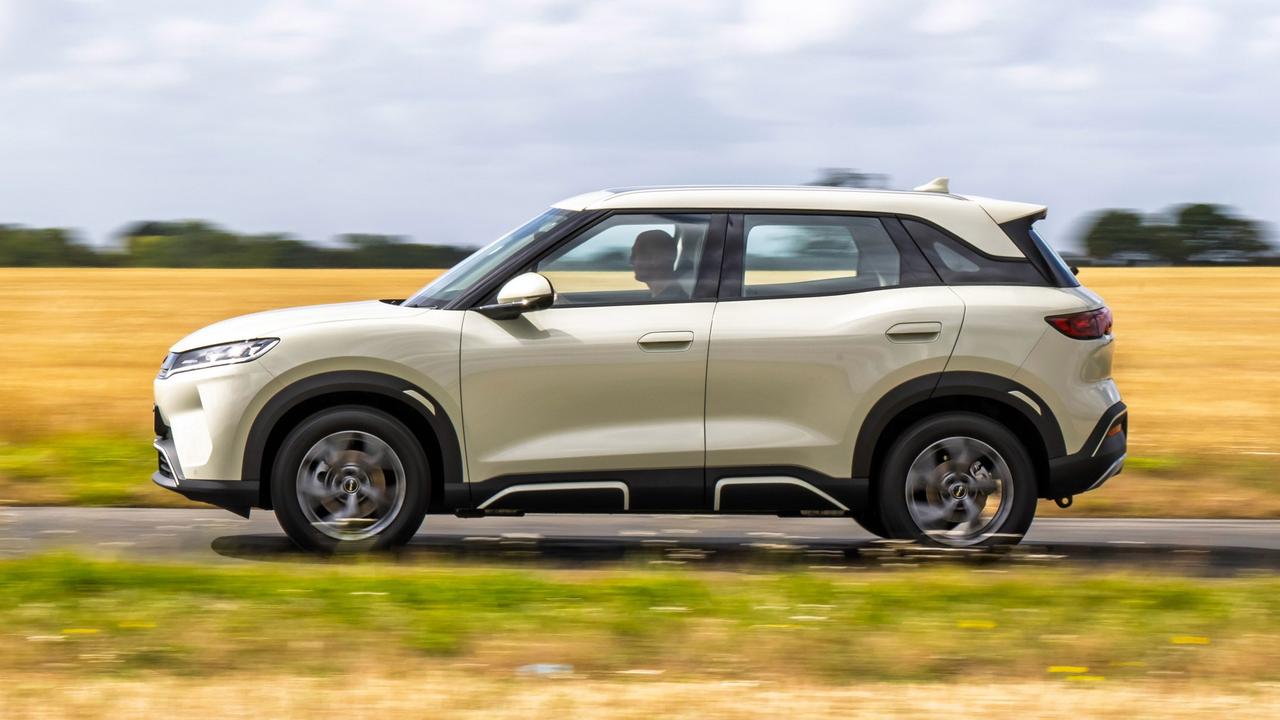
It won’t be coaxed into sporty driving. Steam into a corner too fast and the Atto 2 will demonstrate noticeable body lean.
Unfortunately, there’s a bit too much ambient noise on the motorway, and the soft suspension prevents the car from properly settling down.
The numerous driver assistance systems are a bit too keen to buzz at you. Luckily, many are easily accessed by swiping down from the top of the screen, so you can turn them off without having to dive down through 15 menu layers.













































